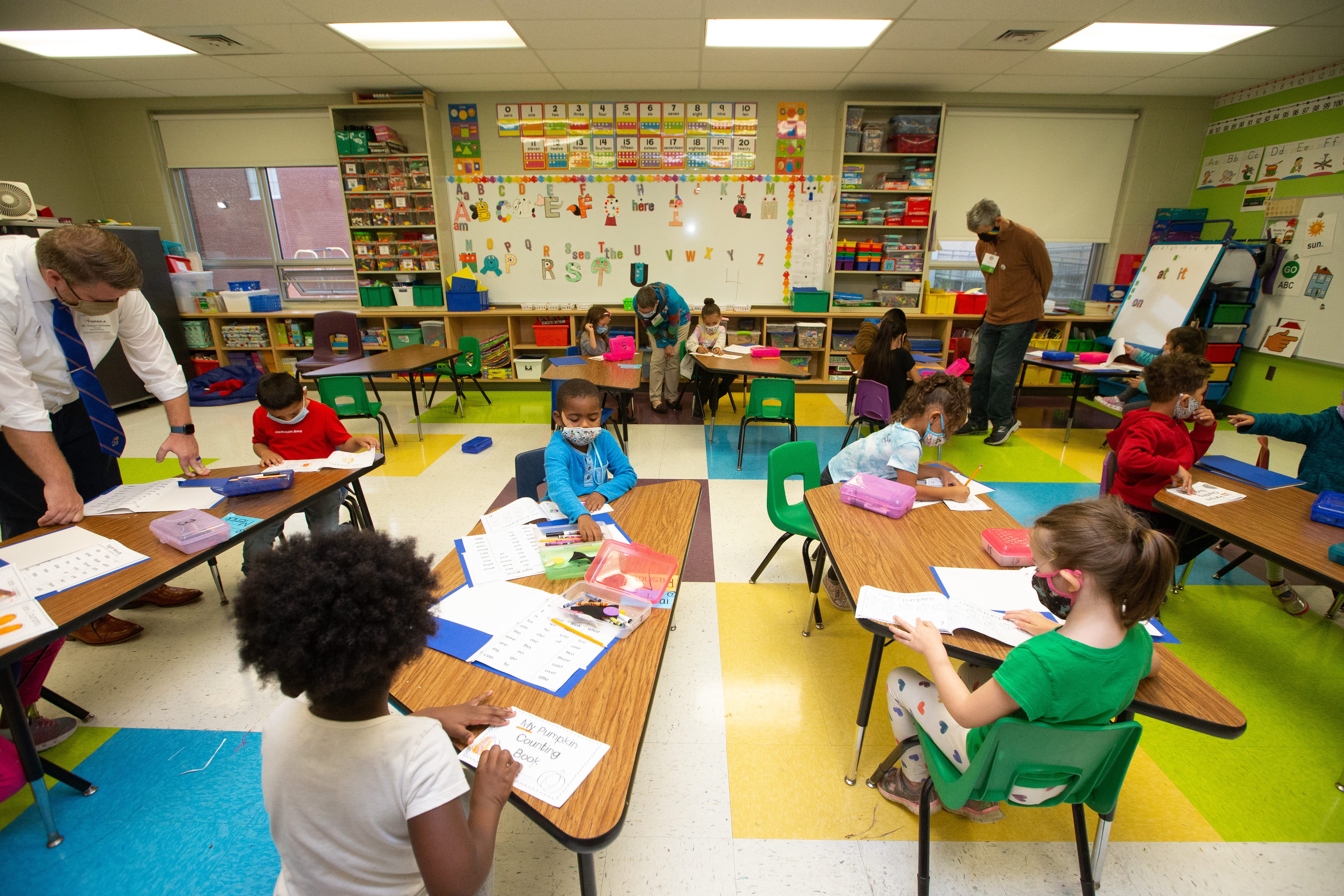Enroll in Primary Science Tuition Singapore for a Strong Science Foundation
Enroll in Primary Science Tuition Singapore for a Strong Science Foundation
Blog Article
A Comprehensive Guide to the Various Knowing Methods in Key Scientific Research Direction
The exploration of diverse discovering approaches in primary science guideline presents a chance for teachers to boost trainee interaction and understanding considerably. By checking out hands-on knowing methods, inquiry-based approaches, and collective approaches, we can identify efficient methods that cater to numerous discovering styles.

Hands-On Learning Strategies
Hands-on understanding methods play a crucial function in key science direction, involving students in active exploration and experimentation. These techniques permit learners to engage straight with products and sensations, fostering a deeper understanding of scientific ideas. By utilizing manipulatives, versions, and real-life experiments, educators create an atmosphere where trainees can observe, assume, and examine their concepts.
Such strategies not only enhance comprehension yet also grow essential reasoning and analytic skills. When students participate in tasks like constructing basic devices, planting seeds, or performing chain reactions, they are motivated to ask questions and look for responses through their very own monitorings. This experiential method helps to debunk complicated scientific concepts, making them much more available and relatable.
In addition, hands-on discovering promotes cooperation among peers, as students usually operate in teams to carry out experiments or share findings. This synergy not only improves their discovering experience but additionally develops essential social abilities. Eventually, integrating hands-on strategies in main science guideline promotes a long-lasting love of discovering and inquisitiveness concerning the natural globe, laying a strong structure for future scholastic quests in scientific research and beyond.
Inquiry-Based Understanding
Inquiry-based knowing is a training approach that motivates pupils to ask questions, check out sensations, and construct their own understanding of scientific principles. This method moves the emphasis from traditional teacher-led direction to an extra student-centered experience, where learners take the initiative in their academic trip. By cultivating curiosity, inquiry-based discovering advertises much deeper engagement with the material, enabling pupils to explore topics in a significant context.
In technique, this method usually involves hands-on experiments, observations, and critical thinking activities that align very closely with the clinical approach. Trainees are motivated to develop theories, layout examinations, and analyze data, which cultivates vital skills such as analytical and analytical reasoning. The role of the educator in this framework is to help with exploration, assisting trainees with the query procedure while motivating independent thought and cooperation.
In addition, inquiry-based learning supports a feeling of possession over the understanding procedure, inspiring trainees to go after understanding proactively. This technique not only enhances understanding of scientific principles yet additionally cultivates a lifelong love for learning, equipping trainees with the skills essential to browse a significantly complicated world.
Collaborative Understanding Approaches
Collaborative discovering approaches equip trainees to participate in significant communications with peers, fostering a shared obligation for their instructional outcomes. In main scientific research instruction, these methods urge students to work together to check out scientific concepts, fix problems, and conduct experiments (primary science tuition Singapore). By taking part in group activities, students can take advantage of varied point of views, permitting for richer understanding and retention of scientific understanding
One trick facet of collaborative discovering is the focus on communication abilities. Pupils must verbalize their ideas, listen actively to others, and discuss concepts, all of which are essential proficiencies in both scholastic and real-world contexts. This social communication not only boosts their understanding of clinical principles yet also advertises synergy and dispute resolution skills.
Furthermore, collaborative knowing often causes raised inspiration and involvement. They are much more likely to take possession of their knowing journey when pupils see the value of their payments within a group. Teachers can promote this process deliberately organized group jobs that line up with curriculum objectives while supplying assistance on effective cooperation methods. In general, incorporating joint knowing approaches in main science direction cultivates a vibrant knowing setting that prepares trainees for future academic and social obstacles.
Modern Technology Integration in Science
The assimilation of modern technology in primary science direction boosts finding out experiences by providing ingenious devices and sources that sustain various teaching approaches, including joint understanding - primary science tuition Singapore. Using digital systems, simulations, and interactive applications allows students to engage deeply with scientific concepts, assisting in an extra hands-on strategy to learning
Virtual laboratories, for example, enable students to perform experiments securely and successfully, advertising inquiry-based understanding. These devices can imitate real-world clinical circumstances, permitting trainees to picture complicated processes that would be challenging to replicate in a conventional classroom setting. Innovation fosters interaction and cooperation among students, as they can share searchings for and work together on tasks via on the internet platforms.
In addition, multimedia presentations and Going Here educational videos can improve lessons by accommodating diverse understanding styles, making abstract concepts extra easily accessible. Data evaluation tools additionally equip pupils to gather and analyze clinical data, strengthening vital thinking abilities. Overall, the critical incorporation of modern technology in primary scientific research instruction not just enhances interaction but likewise prepares pupils for a technically innovative society, outfitting them with important abilities for future scientific ventures.
Set Apart Direction Strategies
Separated direction strategies are vital for resolving the diverse requirements of students in key science education and learning. These approaches allow instructors to customize their teaching techniques to fit differing abilities, interests, and finding out designs within the classroom. By employing separated guideline, educators can create an inclusive atmosphere that cultivates involvement and enhances understanding of scientific concepts.
One efficient method is to utilize versatile grouping, which enables trainees to work together with peers at comparable ability levels or with differing perspectives. This method encourages peer knowing and promotes vital reasoning. In addition, offering choices in tasks can empower students, enabling them to choose projects that resonate with their interests while still meeting curricular purposes.
Additionally, integrating tiered assignments is an additional beneficial method. By developing tasks with differing levels of intricacy, teachers can guarantee that all students are suitably challenged, no matter of their efficiency. Utilizing developmental evaluations to gauge recognizing additional enables educators to adjust their educational techniques dynamically, guaranteeing that each learner gets the support they require.
Eventually, implementing set apart instruction approaches in main science education not just improves pupil knowing end results however likewise cultivates an enthusiasm for science, preparing pupils for future academic searches.

Final Thought
In summary, effective key scientific research direction demands a diverse approach that includes hands-on learning, inquiry-based methods, and collaborative techniques. The combination of innovation and separated guideline further accommodates varied learning styles, cultivating an environment favorable to expedition and crucial reasoning. By applying these strategies, teachers can boost student engagement and understanding, inevitably supporting a lifelong passion for science and query. Such thorough methodologies are vital for creating image source educated and interested future researchers.
The exploration of diverse learning methods in key scientific research instruction provides a chance for educators to enhance student involvement and understanding significantly.Hands-on learning techniques play a pivotal role in key scientific research instruction, involving trainees in active expedition and trial and error.Inquiry-based understanding is a training method that encourages students to ask inquiries, examine phenomena, and construct their very own understanding of clinical ideas.Collaborative understanding strategies equip pupils to engage in meaningful communications with peers, cultivating a get redirected here shared responsibility for their educational results. In general, including collective learning strategies in primary scientific research direction grows a dynamic understanding atmosphere that prepares students for future academic and social obstacles.
Report this page